Livestock guarding dogs
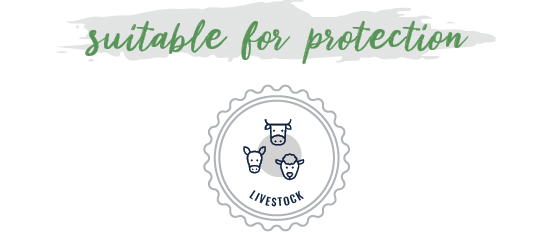
 photo:
Herd protection with a livestock guarding dog
photo:
Herd protection with a livestock guarding dog
Besides shepherds, working dogs played an important role in history of shepherding. The main task of the livestock guarding dogs is to protect the herd from the predator, which separates them from the herding dogs, which guide and manage the herd.
The main characteristic of the livestock guardian dogs is a strongly expressed pack instinct, to which also contribute innate characteristics and consistent training. Since dogs grow up in the herd, it represents their pack, to which they belong completely. For that reason, these dogs become devoted to the livestock herd and become instinctually protective. The territory of the pack is consistently marking by barking, urination and scats, which may help deter predators. Since injuries can be fatal for survival in the nature, representatives from the dog family (e.g. wolves, golden jackals) may avoid conflict situations with livestock guardian dogs. To act as a pack, and thus successfully protect the herd from predators, it is advisable to have at least three shepherd dogs at the herd. This requirement is also indicated by the Ministry of the agriculture, forestry and food in their financial mechanisms. At the same time, it must be emphasized that the livestock guardian dogs should only move within enclosed pastures. There are several suitable breeds of the livestock guardian dogs. Within the LIFE DINALP BEAR project cooperates with breeders of: tornjak, Karst shepherd, Sharplaninac and Caucasian shepherd breeds.
| Advantages | Weaknesses |
|---|---|
| Livestock guarding dogs are very effective in protecting the herd. | In areas witha higher flow rate of people (e.g. mountain paths) and areas without fences (e.g. mountains), this type of protection is NOT APPROPRIATE. |
| The marking of the territory deters predators. | In the first two years, the owner has more work (regular supervision, correction of innappropriate behavior). |
| With an adult livestock guarding dog, the owner does not have much work. | Not all dogs have suitable personal characteristics to successfully protect the herd. |
| Livestock guarding dogs are only used inside enclosures, as this is the only way to ensure the safety for the passers-by. | |
| Besides the purchase of a dog, the costs of vaccination and feeding must also be taken into account. |
Key points of effective protection of the herd with livestock guarding dogs
Dogs should come from the work line
When buying a livestock guarding dog, we decide on the individuals from the work line, which means that the parents of the dog are constantly present besides farm animals, and therefore they are more likely to relate to those animals. Therefore, breeders have many experience in raising such dogs and can advise the new owners.
Pedigree
Purity of the breed is a prerequisite for the creation of appropriate character and body features of a livestock guarding dog, which is proven by the pedigree.
Innate characteristics
When choosing a breed, we must pay attention to the innate characteristics that enable effective protection of the herd from the predator, which can be consulted with the breeder.
Attachment to the herd
To get attached to the herd, the livestock guarding dog must be with it all the time. It grows up within the herd from the age of eight weeks.
Very few contacts with people
Despite the fact that the livestock guarding dog must get socialized with family members, domestic animals and veterinarians, contact with people must be kept to a minimum. The do should get attached to the herd and not to humans. It can not be family pet at the same time.
The training
In the process of the training, suitable conditions and the environment in which the dog can develop and later use innate properties, must be provided.
Nuisance behavior
It is also important to identify inappropriate patterns of behavior and correct them, which requires time and regular observation of the dog right next to the herd. It should often be observed secretly, because its behavior can change with our presence.
Sterilization/castration
Since it prevents unwanted pregnancy and inappropriate behaviors during the mating time (e.g. escapes from the pasture), sterilization or castration of livestock guarding dogs is also recommended.
Succesfull work
If the livestock guarding dog is careful and protective to the herd, then his work can be recognized as successful.
The dog number
Since the individual dog avoids the conflict with the wolf pack, use of at least three livestock guarding dogs for the protection against wolves or the larger brown bear is recommended. They can be gradually included in the herd.
Attention, the livestock guarding dog!
A fenced area protected by a livestock guarding dog must be marked with warning signs, which should be installed at all potential crossings of the passers-by.
THE LGD BREEDERS FROM THE LIFE DINALP BEAR PROJECT
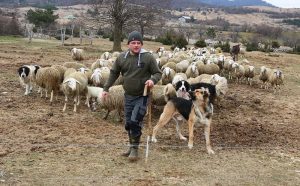
Tornjak
Breeder/s:
Aleš in Andrej Sedmak
Location:
Juršče (Pivka)
Contact:
About the farm:
On the farm Sedmak, they have been engaged in the breeding of the tornjak breed for many years.
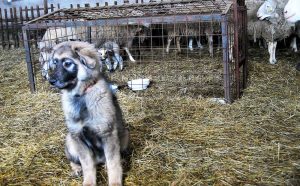
KARST SHEPHERD
Breeder/s:
Anita Tomšič
Location:
Zagorje (Pivka)
Contact:
About the farm:
The farm Tomšić has been breeding the Karst shepherds, the Slovenian specialties, for many years.
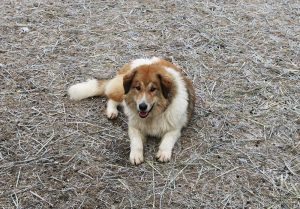
TORNJAK
Breeder/s:
Kaja Špruk
Location:
Ig
Contact:
About the farm:
The farm has been breeding shepherd dogs for many years. In addition to protect the herd, they started to breed livestock guardian dogs.

Caucasian shepherd
Breeder/s:
Gregor Ogrizek
Location:
Contact:
About the farm:
On the farm Poni ranč Ogrizek is engaged in dog breeding for 25 yeas already. Until now, they breed more than 60 Caucasian shepherds, from which at least one third of the dogs perform the work of a livestock guarding dog.
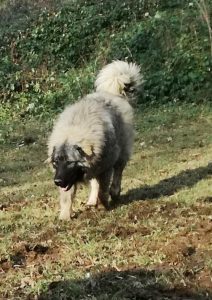
Sharplaninac
Breeder/s:
Stanko Pašič
Location:
Štrekljevec (Semič)
Contact:
About the farm:
The farm has been actively engaged in Sharplaninac breeding for 25 years.
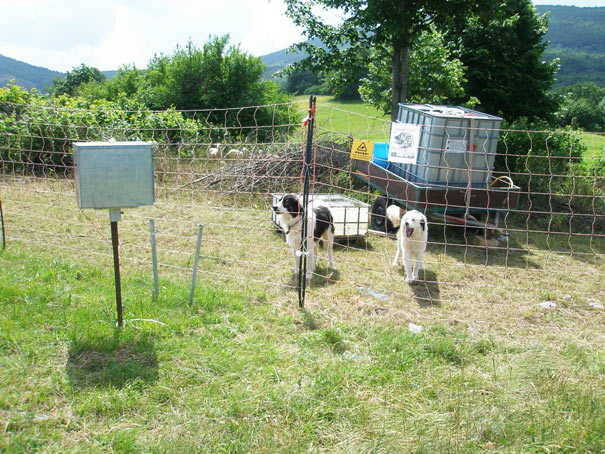 photo:
Livestock guarding dogs protecting the herd inside high electric fences
photo:
Livestock guarding dogs protecting the herd inside high electric fences
Common mistakes when protecting the herd with livestock guardian dogs:
- If a livestock guarding dog gets attached to the family members, he starts to leave the herd and searches for the proximity of the owners.
- If there is no electric current in the fence, the livestock guarding dog can cross it because of a lack of fear.
- A livestock guarding dog who is tethered down on a pasture cannot do his job.
- The livestock guarding dog injures, bites and chases the animals in the herd.
- A pasture with a livestock guarding dog is not properly marked (without warning signs).



